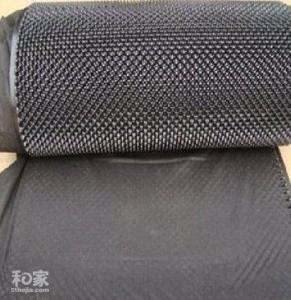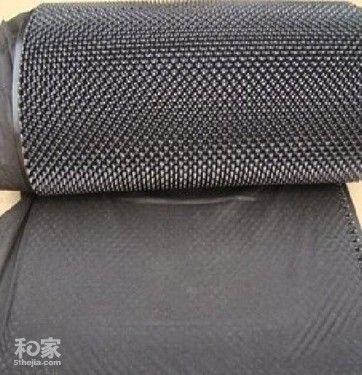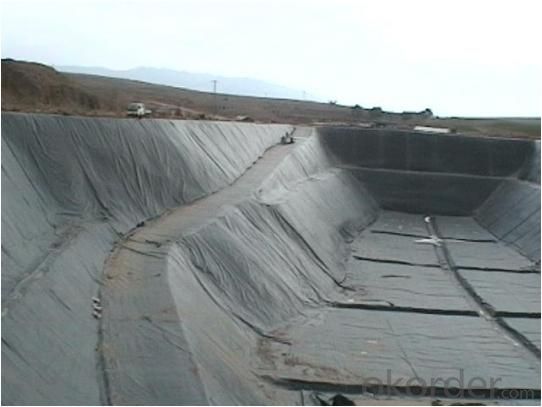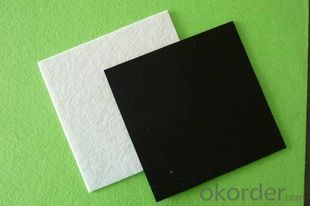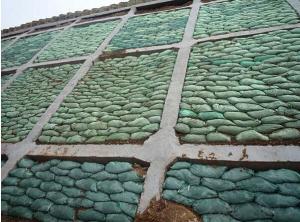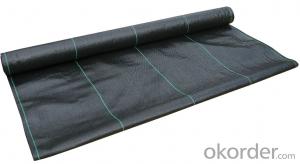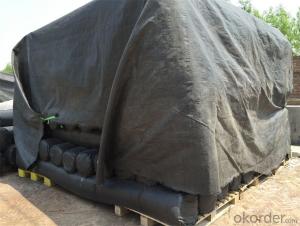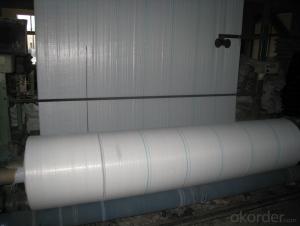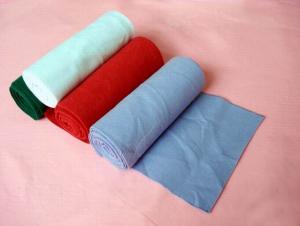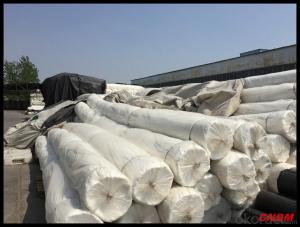Ts20 PP Polypropylene Woven Geotextile
- Loading Port:
- Tianjin
- Payment Terms:
- TT or LC
- Min Order Qty:
- 5000 g/m²
- Supply Capability:
- 10000 g/m²/month
OKorder Service Pledge
OKorder Financial Service
You Might Also Like
Packaging & Delivery
| Packaging Detail: | As per buyer specifications. |
| Delivery Detail: | 15-20 days from the order confirmation. |
Specifications
We are the leading exporters for Coir Geo Textiles.It is 100 % Natural fiber, extracted from coconut husk.
COIR GEOTEXTILES
Coir is a 100% organic fiber, from a renewable source…the coconut husk. Naturally resistant to rot, moulds and moisture, it needs no chemical treatment. Hard and strong, it can be spun and woven into matting. They also have the right strength and durability to protect the slopes from erosion, while allowing vegetation to flourish. They can dissipate the energy of flowing water and absorb the excess solar radiation.
ATTRIBUTES OF GEOTEXTILES:
High Moisture Absorbing Capacity
High Initial Strength
Low Extension at Break
High Roughness co- efficient
High Spinnabillity
Bio – Degradable
Soil Hourisher
Economical
Eco Friendly
APPLICATIONS:
Used to control soil erosion at work -sites, Road construction areas, River banks etc as a protective measure/mesh
Used in controlling even the steepest of slopes from erosion.
Used in new vegetation by absorbing water and preventing top soil from drying out.
SPECIFICATIONS:
Roll Size | Gsm | Weight Per Roll | Lodability of 20Ft ( In sq.mt ) | Lodability of 40Ft ( In sq.mt ) |
1m x 50m= 50 m2/roll | 400 | 20 Kgs | 10800 | 24000 |
700 | 35 Kgs | 6300 | 14000 | |
900 | 45 Kgs | 5800 | 13000 | |
1.2 m x 50m=60m2/roll | 400 | 24 Kgs | 10800 | 24000 |
700 | 42 Kgs | 6300 | 14000 | |
900 | 54 Kgs | 5800 | 13000 | |
2 m x 50 m= 100 m2/roll | 400 | 40 Kgs | 10800 | 24000 |
700 | 70 Kgs | 6300 | 14000 | |
900 | 90 Kgs | 5800 | 13000 | |
3m x 50m=150 m2/roll | 400 | 60 Kgs | 10800 | 24000 |
700 | 105 Kgs | 6300 | 14000 | |
900 | 135 Kgs | 5800 | 13000 | |
4m x 50m= 200 m2/roll | 400 | 80 Kgs | 10800 | 24000 |
700 | 140 Kgs | 6300 | 14000 | |
900 | 180 Kgs | 5800 | 13000 |
PACKING :
All rolls packed in HDPE Bags
CERTIFICATION:
Fumigation & Phytosanitary will be done during loading of the container.
Any other quality certificates can be done at the cost of the buyer.

FAQ:
♦ Payment terms: by T/T or L/C |
♦ MOQ:2000 SQM |
♦ If you are interested in our products ,pls advice me the technical index,product weight etc,the more information the better..... |
What is a Geotextile Fabric?
Geotextiles are simple and permeable sheets of fabric which come in rolls and can be rolled out on the ground when a barrier is needed. These sheets are made of a special fabric that has special characteristics for your landscaping or construction needs. For example, one feature is that they help separate sections of your soil by acting as a barrier between the deeper areas and the surface (where your plants or other project arrangements are located). They can block out unwanted weeds and growth from coming to the surface and still allow drainage of excess water that you don't want in the area. The main benefits of such a fabric are that: i) your plants and landscaping won't suffer from unfair competition posed by weeds and roots, and ii) the area won't become inundated with water. It's like an additional helpful hand for your garden or construction site. Geotextile fabrics can act in this way because they are typically composed of polypropylene or polyester materials.
- Q: Can geotextiles be used in stormwater detention systems?
- Yes, geotextiles can be used in stormwater detention systems. Geotextiles are permeable fabrics that can help control erosion and filter sediment in stormwater runoff. In detention systems, they can be used as a barrier to separate soil layers, enhance filtration, and improve overall system performance by preventing clogging and promoting efficient water flow.
- Q: How do geotextiles contribute to groundwater protection?
- Geotextiles contribute to groundwater protection by acting as a barrier between the soil and any potential contaminants. They prevent the infiltration of pollutants into the groundwater by providing a filtration layer that allows water to pass through while trapping harmful substances. Additionally, geotextiles help in stabilizing the soil, reducing erosion and sedimentation that can impact the quality of groundwater.
- Q: Do you have a geotextile
- Summer to sunscreen, winter to antifreeze. The So summer not only to be able to block the sun, but also breathable. The Winter to warm good. The To achieve such a request, no matter what you can make the material. The
- Q: Where is the geotextile in the municipal works?
- Conservation, consideration, there is more green and more Chinese geotextile material manufacturers
- Q: How are geotextiles used in landfills?
- Geotextiles are used in landfills as a protective barrier or liner, preventing the contamination of soil and groundwater by acting as a barrier between the waste and the underlying natural environment. They help to control the flow of liquids, filter out pollutants, and provide stability to the landfill structure, ultimately enhancing environmental protection and the longevity of the landfill.
- Q: Geotextile vertical and horizontal stretching the gap is too much how to adjust
- Geotextile longitudinal and horizontal tensile strength of the gap adjustment, mainly in the carding, laying the net, drawing three links to control, sort out the ratio of Daofu regulation, shop layer, shop curtain speed ratio, Sticks, input and output differences, and so are the cause of a huge gap, the other fiber curl, and so is the key. For the above adjustment, you will find the law. In order to geotextile stretch the vertical and horizontal adjustment equal.
- Q: What are the different geotextile installation guidelines?
- There are several different geotextile installation guidelines that vary depending on the specific project and goals. Some common guidelines include ensuring proper site preparation, including clearing and grading the area, as well as removing any debris or vegetation. It is important to properly measure and cut the geotextile to fit the designated area, allowing for overlap and securing the edges. Additionally, proper anchoring methods should be used to prevent movement or displacement of the geotextile. Finally, regular inspection and maintenance should be conducted to ensure the geotextile is functioning as intended.
- Q: Polyester geotextile filter layer sets what the amount
- Polyester filament geotextile Features: Polyester filament geotextile is made by polyester method by spinning acupuncture consolidation directly made, product specifications from 80-800g / m2 arbitrary choice, it is geotechnical engineering and civil engineering In the application of a geosynthetics, polyester filament into a network and consolidation method, the fiber arranged in three-dimensional structure. In addition to good mechanical properties, but also has a good vertical and horizontal drainage performance and good extension properties and high resistance to biological, acid and alkali, anti-aging and other chemical stability. At the same time, it also has a wide pore size range, tortuous pore distribution, excellent permeability and filtration performance. Polyester filament geotextile Uses: water conservancy project dam and slope protection of the filter, channel isolation, seepage; road, rail, airport runway foundation isolation, filter, drainage, slope, retaining wall and road reinforcement, Drainage; Port Engineering soft foundation treatment, beach embankment, harbor wharf and breakwater reinforcement, drainage; polyester filament geotextile has been widely used in the field of infrastructure construction, and gradually applied to a wider range of areas. Geosynthetics are the general term for synthetic materials for civil engineering applications. As a kind of civil engineering material, it is a synthetic polymer (such as plastic, chemical fiber, synthetic rubber, etc.) as raw materials, made of various types of products, placed in the soil, the surface or between the various soil , Play to strengthen or protect the role of soil. "Geosynthetics application of technical specifications" will be divided into geotextile geotextile geotextile, geomembrane, geotextile special materials and geotextile materials, geotextile, fiberglass, geotextile and other types.
Send your message to us
Ts20 PP Polypropylene Woven Geotextile
- Loading Port:
- Tianjin
- Payment Terms:
- TT or LC
- Min Order Qty:
- 5000 g/m²
- Supply Capability:
- 10000 g/m²/month
OKorder Service Pledge
OKorder Financial Service
Similar products
Hot products
Hot Searches
Related keywords
